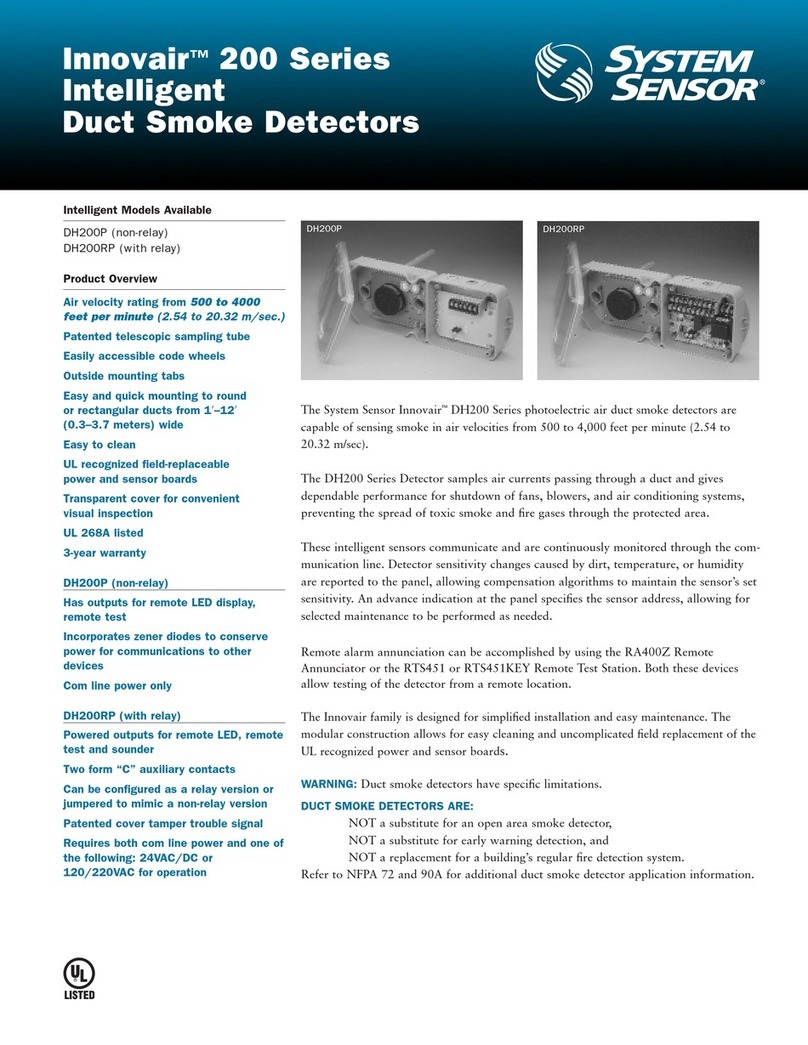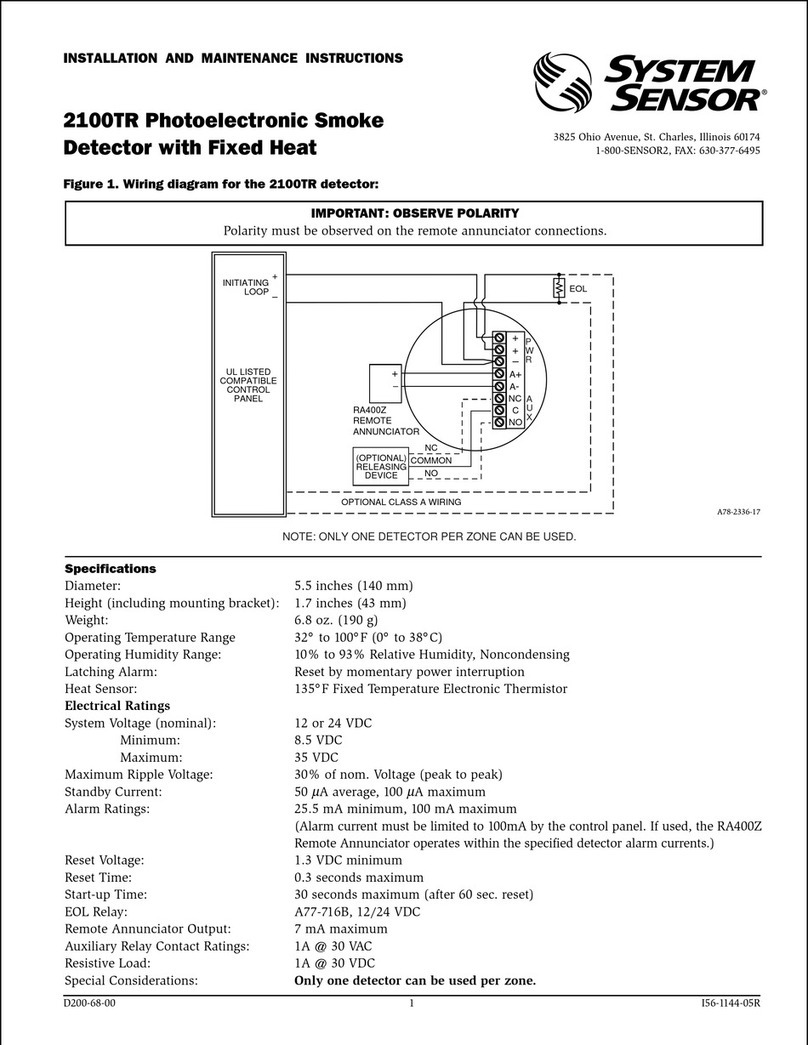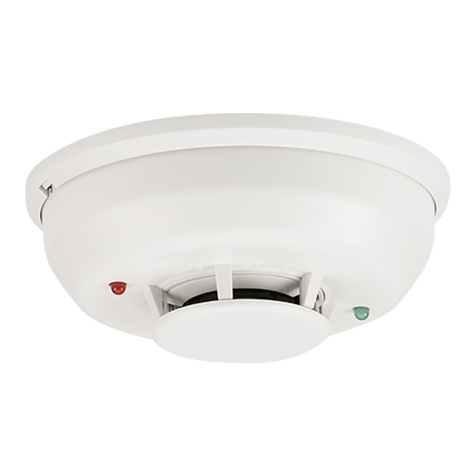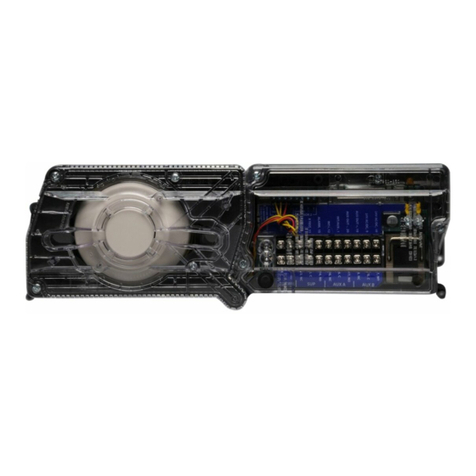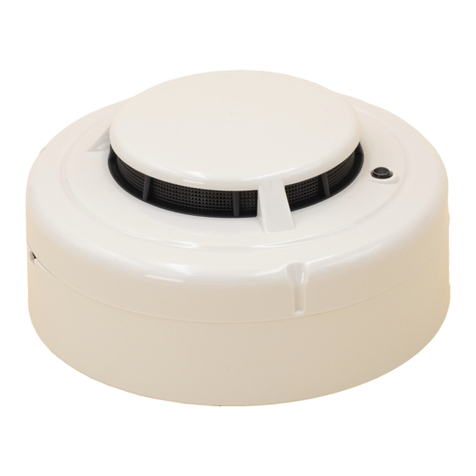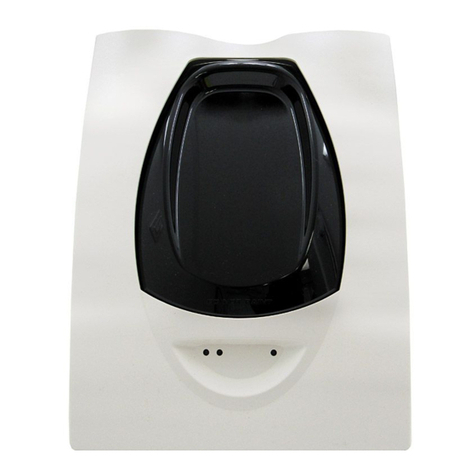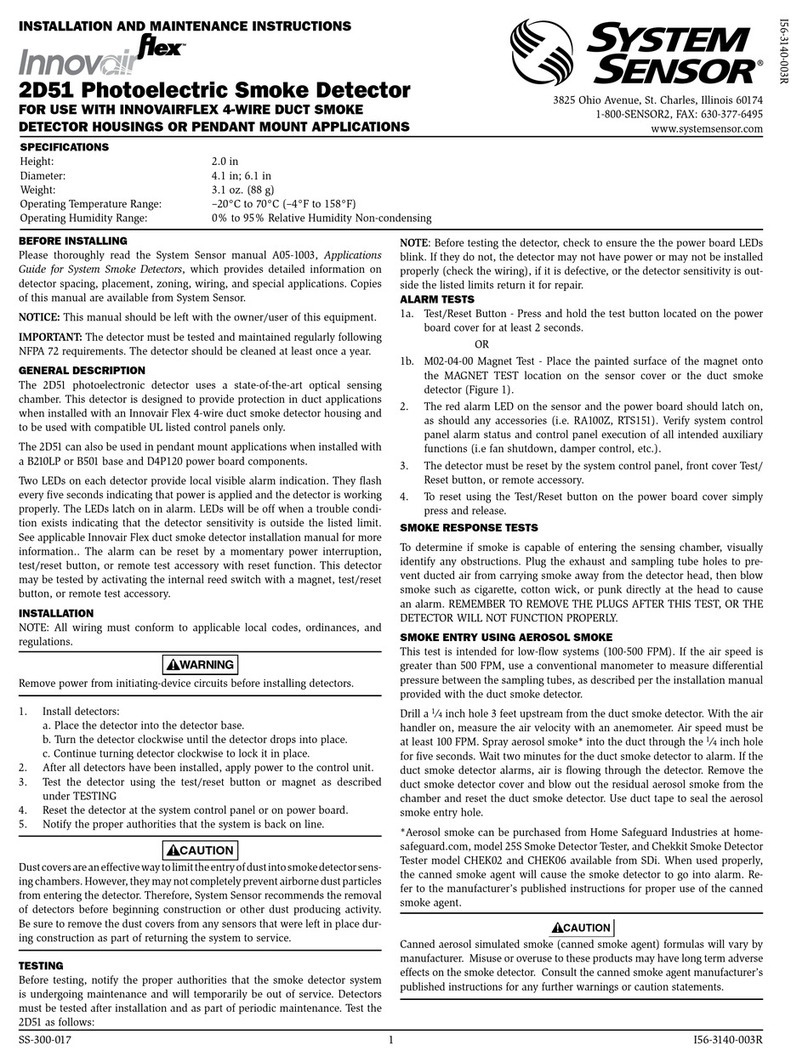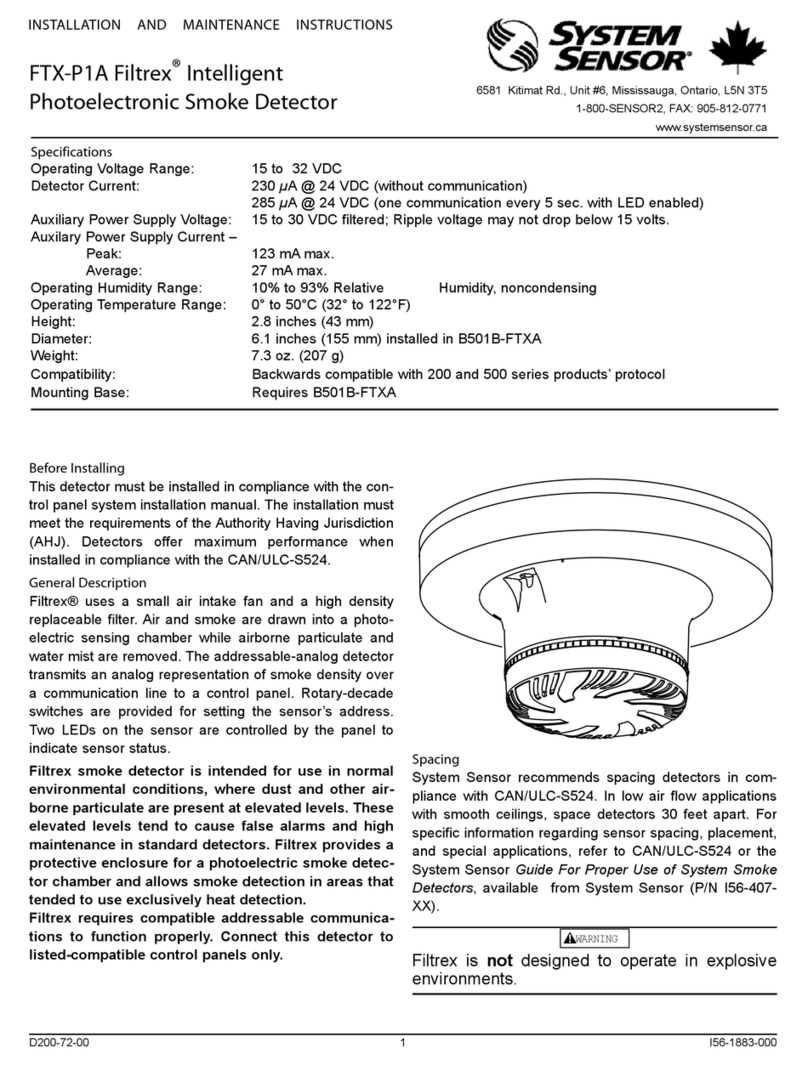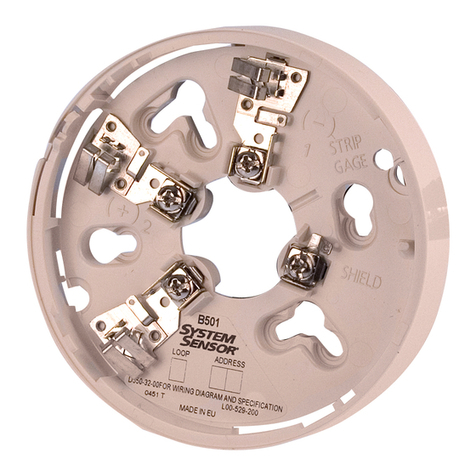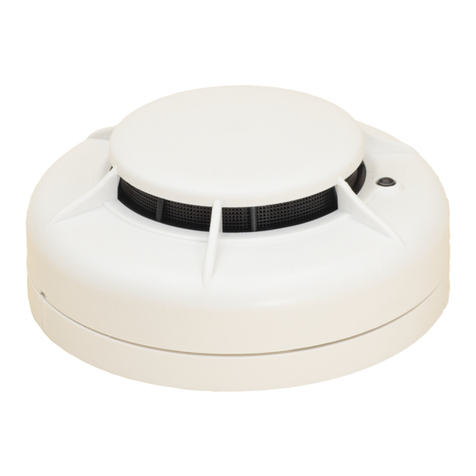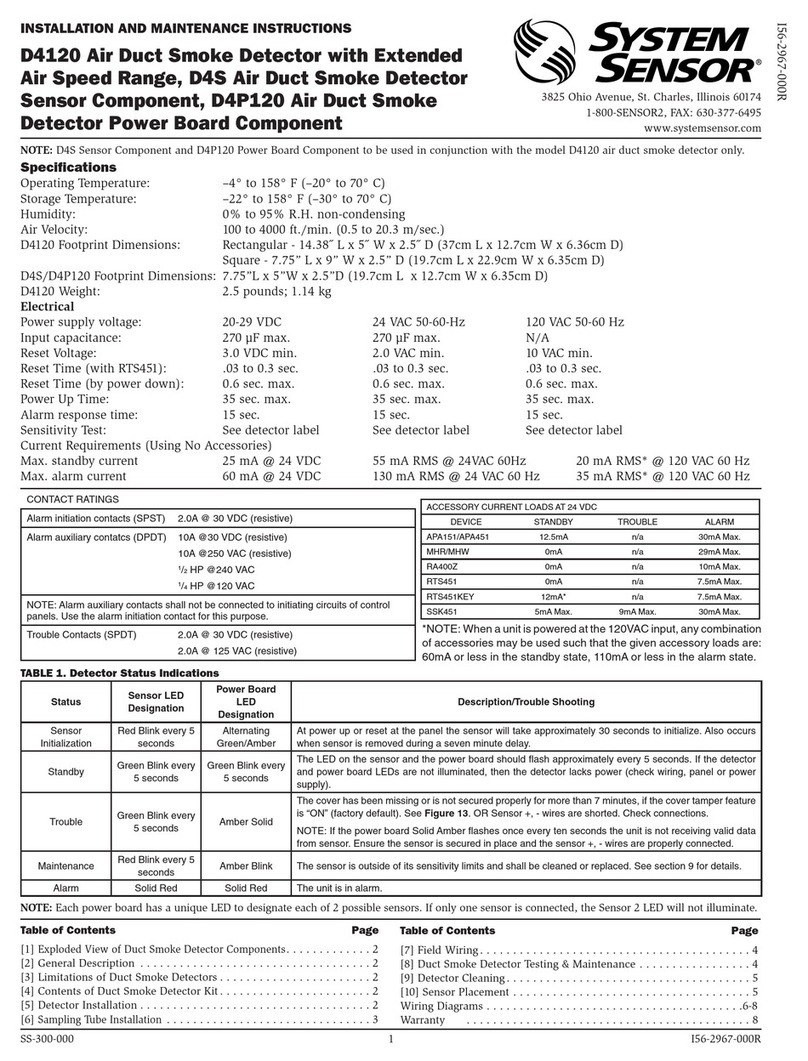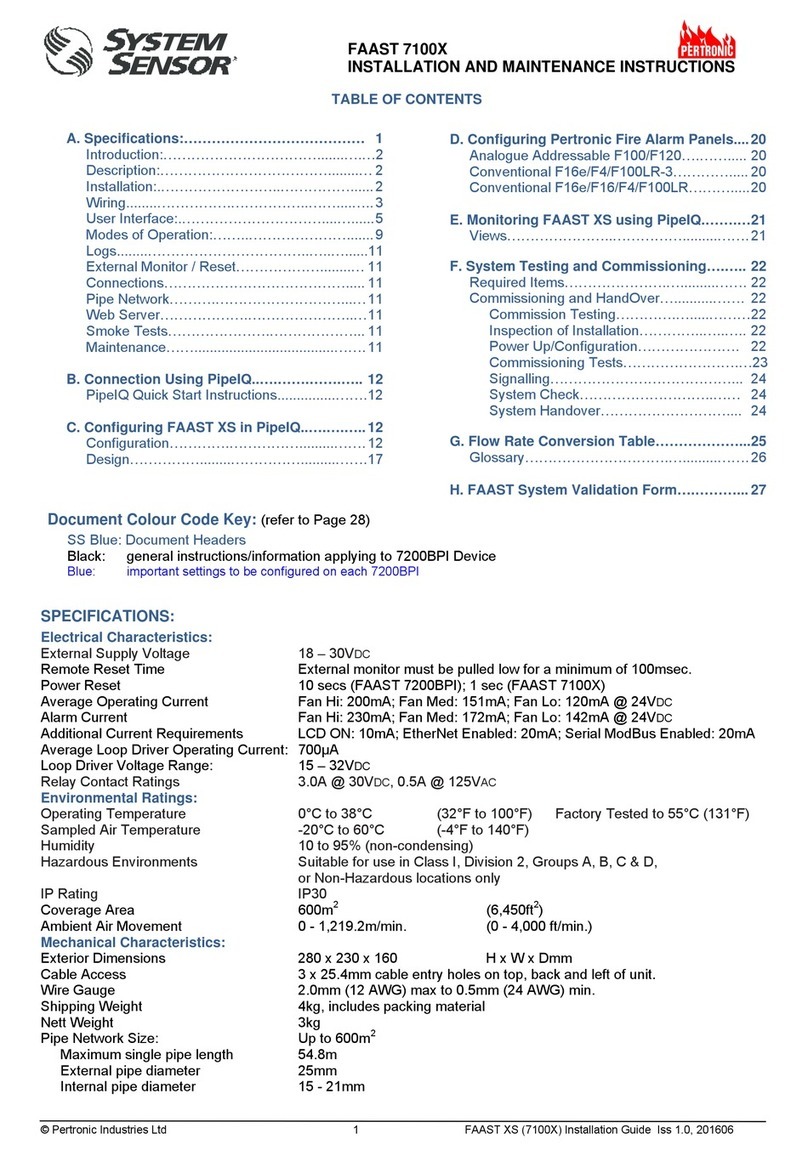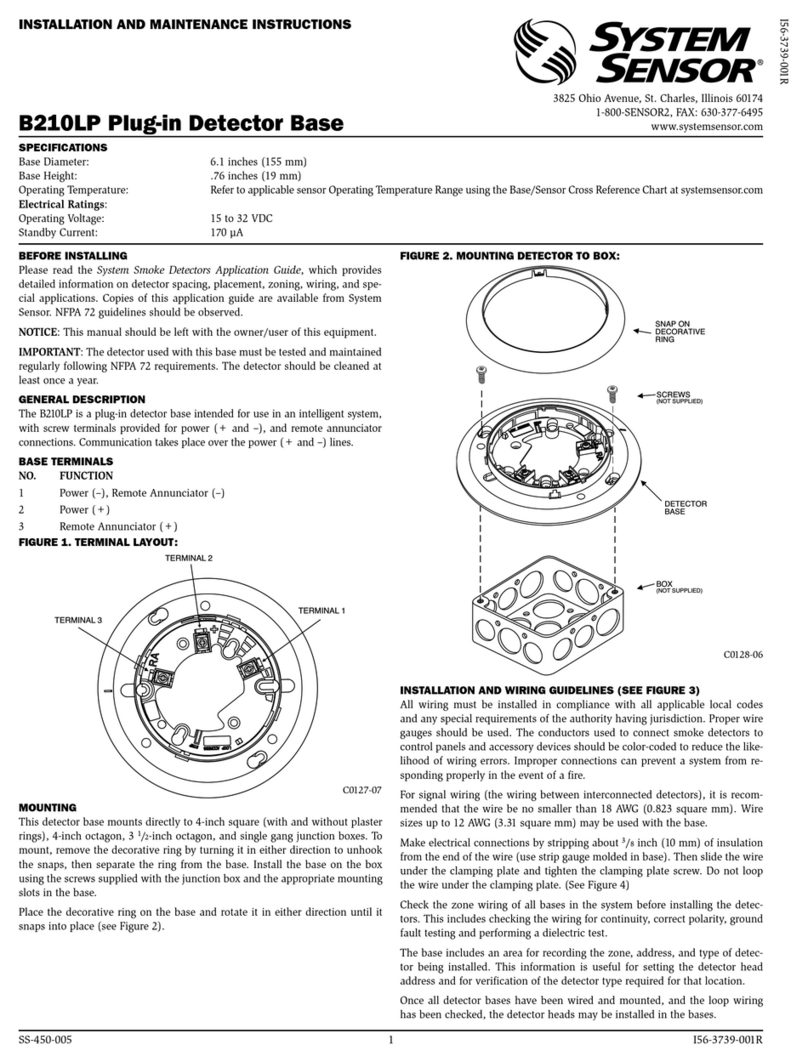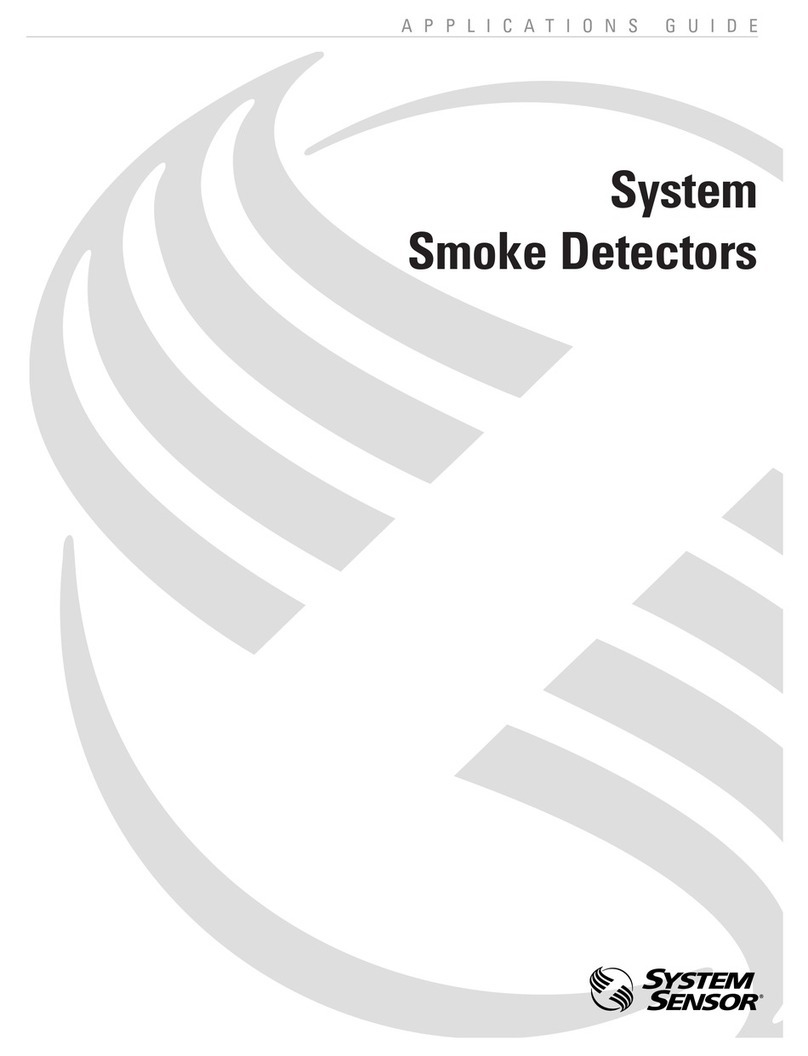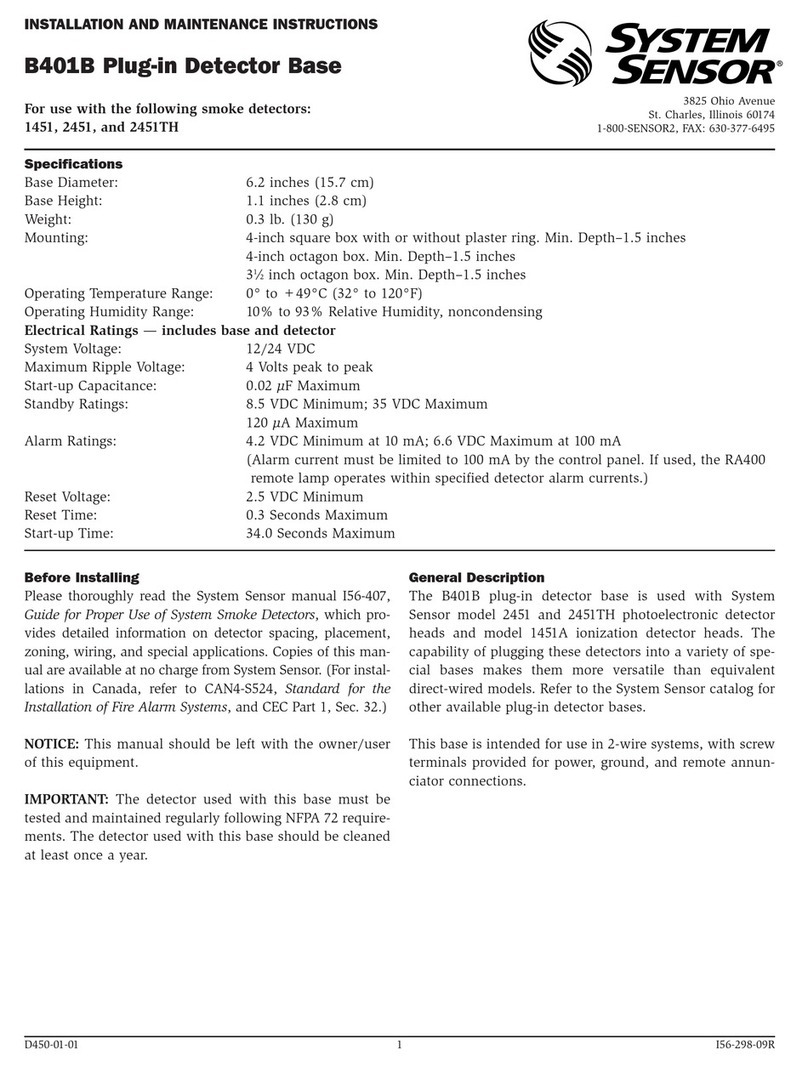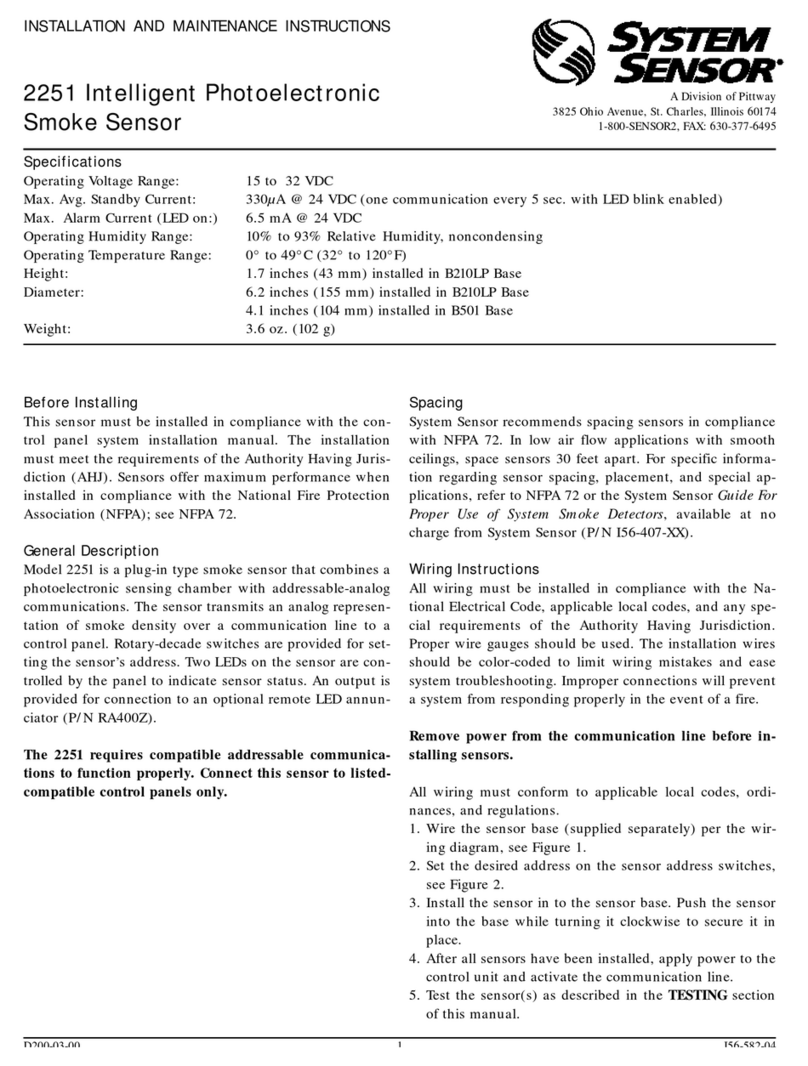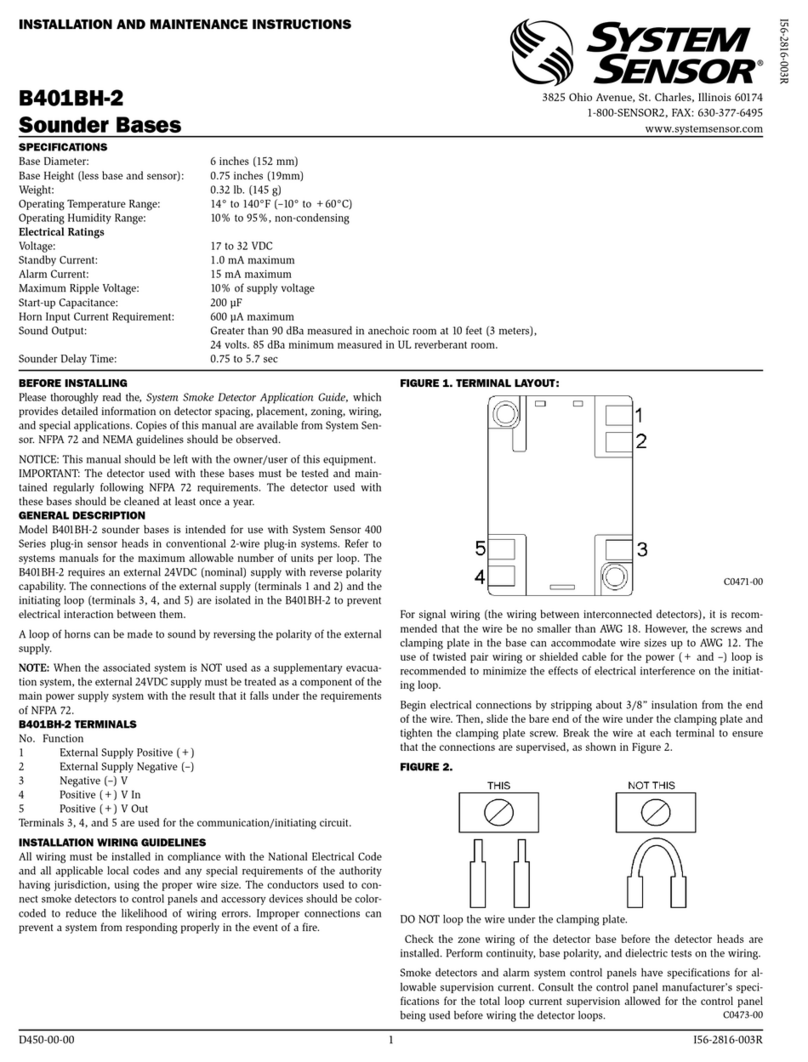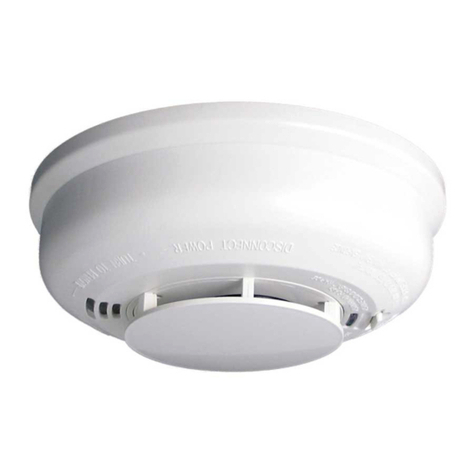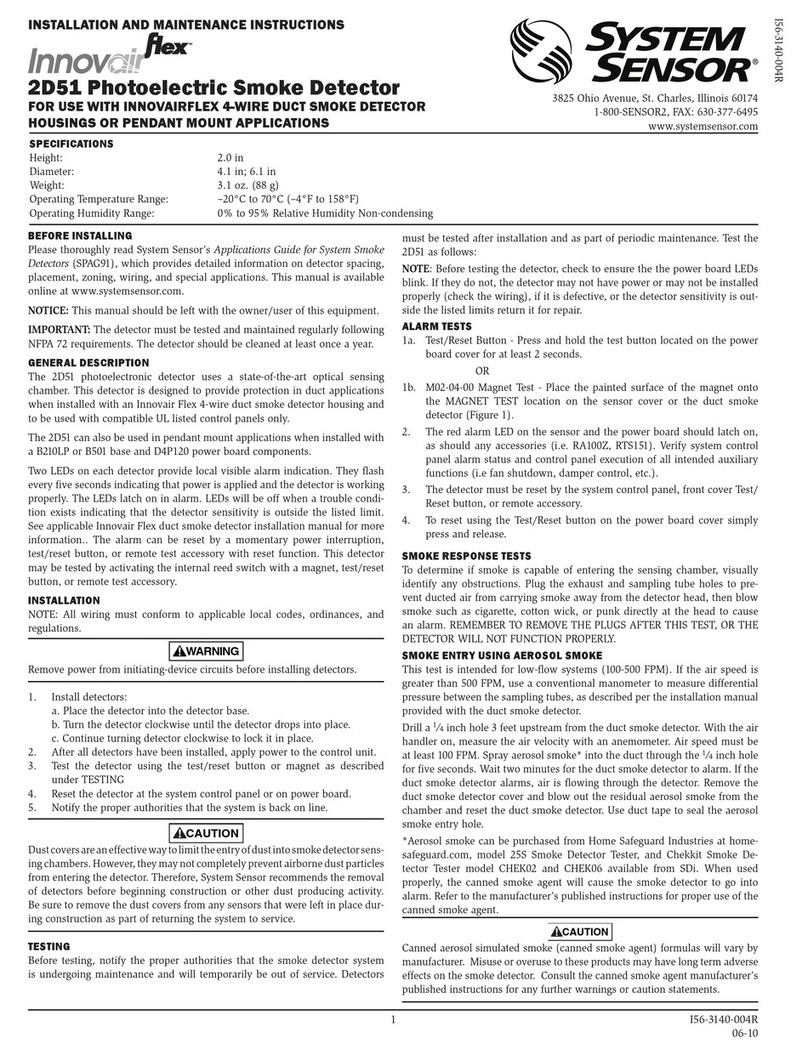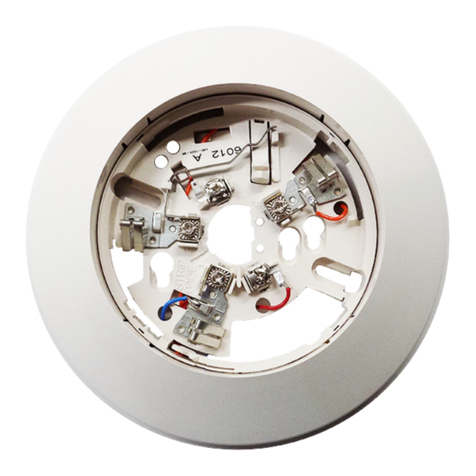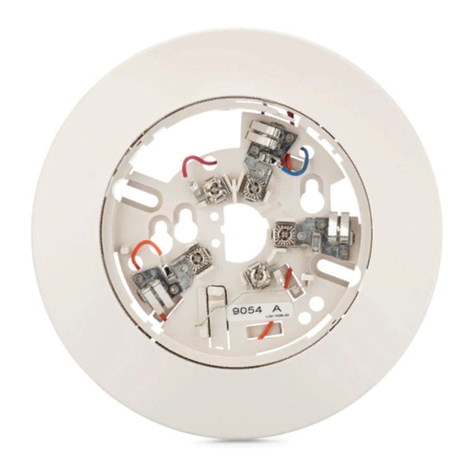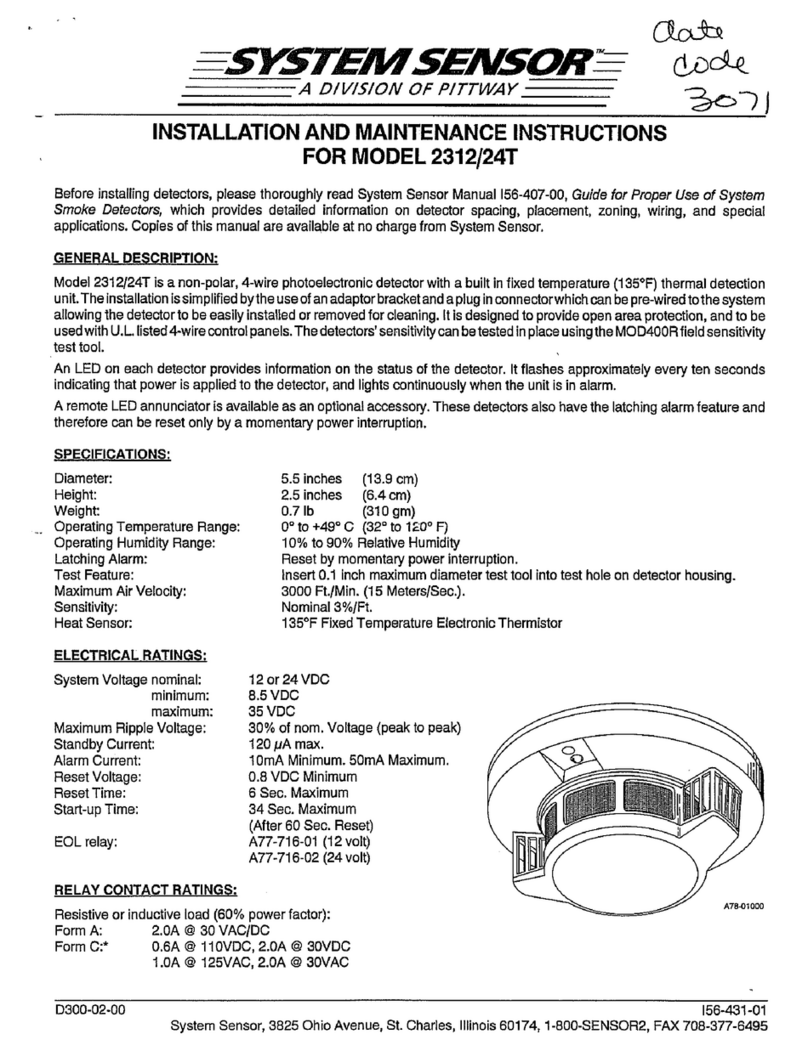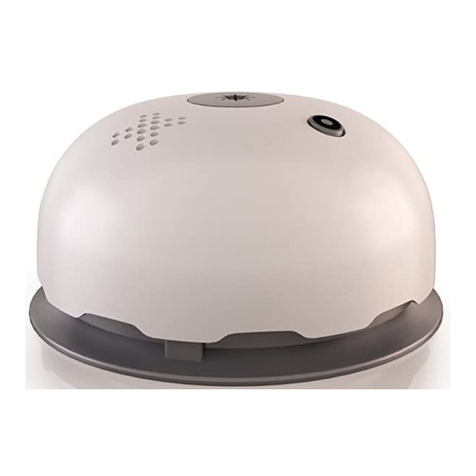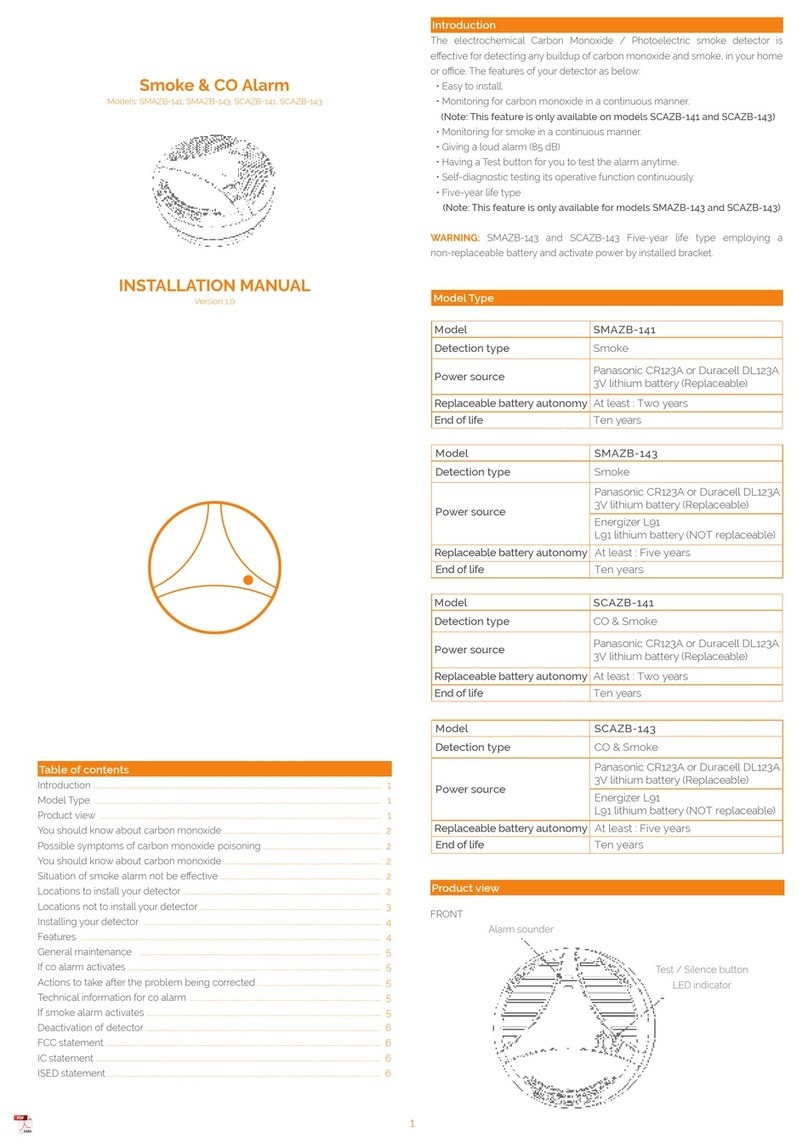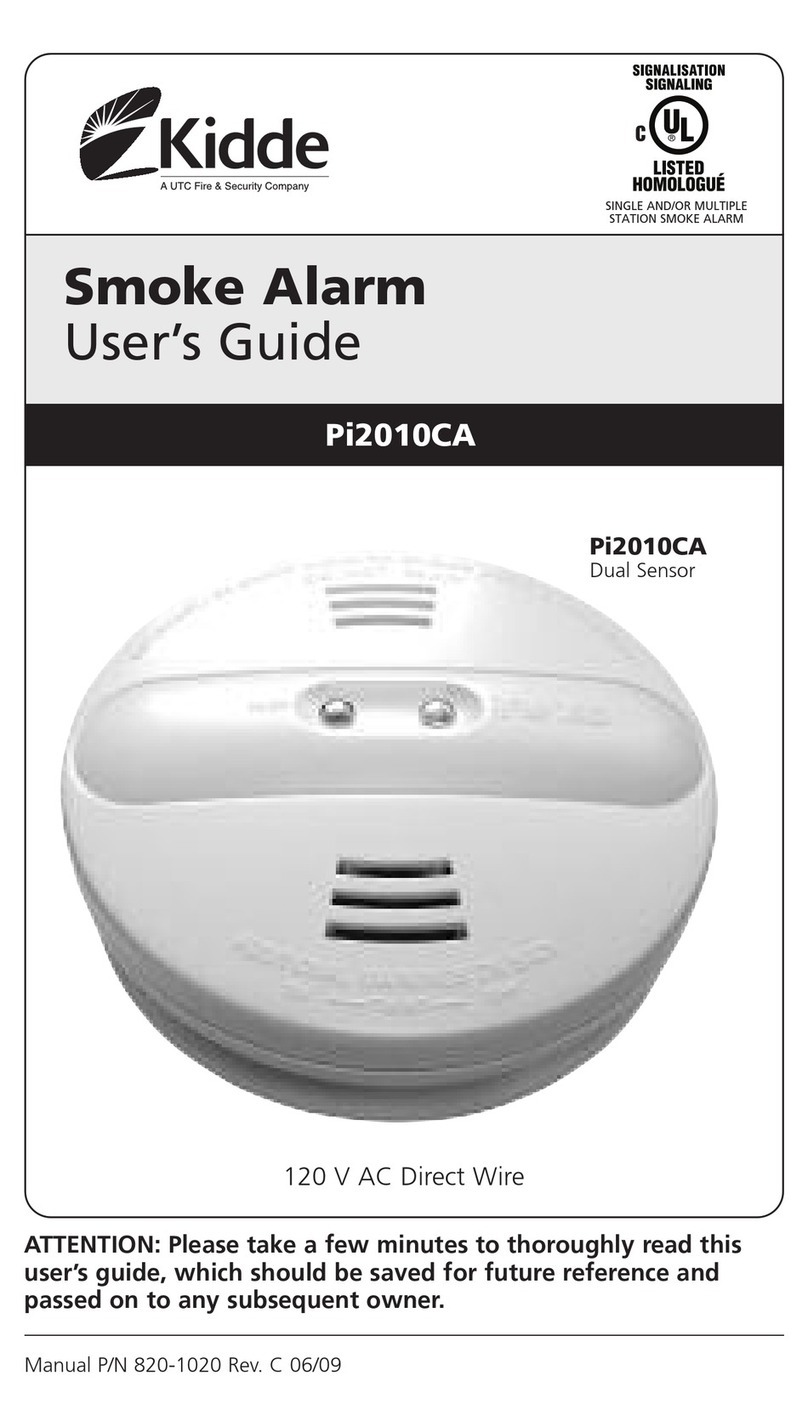
D200-83-00 4 I56-1239-01
© System Sensor 1999
Three-Year Limited Warranty
System Sensor warrants its enclosed smoke detector to be free from de-
fects in materials and workmanship under normal use and service for a
period of three years from date of manufacture. System Sensor makes no
other express warranty for this smoke detector. No agent, representative,
dealer, or employee of the Company has the authority to increase or alter
the obligations or limitations of this Warranty. The Company’s obligation
of this Warranty shall be limited to the repair or replacement of any part of
the smoke detector which is found to be defective in materials or work-
manship under normal use and service during the three year period com-
mencing with the date of manufacture. After phoning System Sensor’s toll
free number 800-SENSOR2 (736-7672) for a Return Authorization number,
send defective units postage prepaid to: System Sensor, Repair Depart-
ment, RA #__________, 3825 Ohio Avenue, St. Charles, IL 60174. Please
include a note describing the malfunction and suspected cause of failure.
The Company shall not be obligated to repair or replace units which are
found to be defective because of damage, unreasonable use, modifica-
tions, or alterations occurring after the date of manufacture. In no case
shall the Company be liable for any consequential or incidental damages
for breach of this or any other Warranty, expressed or implied whatsoever,
even if the loss or damage is caused by the Company’s negligence or fault.
Some states do not allow the exclusion or limitation of incidental or conse-
quential damages, so the above limitation or exclusion may not apply to
you. This Warranty gives you specific legal rights, and you may also have
other rights which vary from state to state.
This smoke detector is designed to activate and initiate emergency ac-
tion, but will do so only when it is used in conjunction with an authorized
fire alarm system. This detector must be installed in accordance with
NFPA standard 72. (For installation in Canada, refer to CAN/ULC-S524-
M91,
Standard for the Installation of Fire Alarm Systems
, and CEC Part 1,
sec. 32.)
Smoke detectors will not work without power. AC or DC powered
smoke detectors will not work if the power supply is cut off.
Smoke detectors will not sense fires which start where smoke does not
reach the detectors. Smoldering fires typically do not generate a lot of
heat which is needed to drive the smoke up to the ceiling where the
smoke detector is usually located. For this reason, there may be large de-
lays in detecting a smoldering fire with either an ionization type detector
or a photoelectric type detector. Either one of them may alarm only after
flaming has initiated which will generate the heat needed to drive the
smoke to the ceiling.
Smoke from fires in chimneys, in walls, on roofs or on the other side of a
closed door(s) may not reach the smoke detector and alarm it. A detector
cannot detect a fire developing on another level of a building quickly or at
all. For these reasons, detectors shall be located on every level and in
every bedroom within a building.
Smoke detectors have sensing limitations, too. Ionization detectors and
photoelectric detectors are required to pass fire tests of the flaming and
smoldering type. This is to ensure that both can detect a wide range of
types of fires. Ionization detectors offer a broad range of fire sensing capa-
bility but they are somewhat better at detecting fast flaming fires than
slow smoldering fires. Photoelectric detectors sense smoldering fires better
than flaming fires which have little, if any, visible smoke. Because fires de-
velop in different ways and are often unpredictable in their growth, nei-
ther type of detector is always best, and a given detector may not always
provide early warning of a specific type of fire.
In general, detectors cannot be expected to provide warnings for fires re-
sulting from inadequate fire protection practices, violent explosions, es-
caping gases which ignite, improper storage of flammable liquids like
cleaning solvents which ignite, other similar safety hazards, arson, smok-
ing in bed, children playing with matches or lighters, etc. Smoke detectors
used in high air velocity conditions may have a delay in alarm due to dilu-
tion of smoke densities created by frequent and rapid air exchanges. Addi-
tionally, high air velocity environments may create increased dust
contamination, demanding more frequent maintenance.
To keep your equipment in excellent working order, ongoing maintenance
is required per the manufacturer’s recommendations and UL and NFPA
standards. At a minimum, the requirements of Chapter 7 of NFPA 72, the
National Fire Alarm Code, shall be followed. A preventative maintenance
agreement should be arranged through the local manufacturer’s represen-
tative. Though smoke detectors are designed for long life, they may fail at
any time. Any smoke detector, fire alarm equipment, or any component of
that system which fails shall be repaired or replaced as soon as possible.
WARNING
The Limitations of Property Protection Smoke Detectors
REMOVABLE
HOUSING
REMOVABLE
SCREEN
SENSING
CHAMBER
COVER
BASE
SENSING
CHAMBER
;;;;;;;;;;;;;;;;
;;;;;;;;;;;;;;;;
;;;;;;;;;;;;;;;;
;;;;;;;;;;;;;;;;
;;;;;;;;;;;;;;;;
;;;;;;;;;;;;;;;;
;;;;;;;;;;;;;;;;
yyyyyyyyyyyyyyyy
yyyyyyyyyyyyyyyy
yyyyyyyyyyyyyyyy
yyyyyyyyyyyyyyyy
yyyyyyyyyyyyyyyy
yyyyyyyyyyyyyyyy
yyyyyyyyyyyyyyyy
;;;;;;;;;;;;;;;;
;;;;;;;;;;;;;;;;
;;;;;;;;;;;;;;;;
;;;;;;;;;;;;;;;;
;;;;;;;;;;;;;;;;
;;;;;;;;;;;;;;;;
;;;;;;;;;;;;;;;;
yyyyyyyyyyyyyyyy
yyyyyyyyyyyyyyyy
yyyyyyyyyyyyyyyy
yyyyyyyyyyyyyyyy
yyyyyyyyyyyyyyyy
yyyyyyyyyyyyyyyy
yyyyyyyyyyyyyyyy
A78-2565-02
Figure 5. Removal of cover and screen for cleaning:2. Vacuum the screen carefully without removing it.
3. Remove screen assembly, pulling straight out (see
Figure 5).
4. Remove the sensing chamber cover.
5. Clean the sensing chamber by vacuuming or blowing
out dust and particles.
6. Replace the sensing chamber cover, aligning the arrow
on the cover top with the arrow on the printed circuit
board.
7. Replace the screen by placing the screen assembly over
the sensing chamber cover and twisting until it snaps
into place.
8. Replace the housing by aligning the three triangular
slots on the base with their counterparts on the hous-
ing. Gently press the housing until it locks in place.
Check to make sure that the thermistors are in the up-
right position.
9. Reinstall the detector.
10. Notify the proper authorities that the system is back in
operation.
Technical Manuals Online! - http://www.tech-man.com
